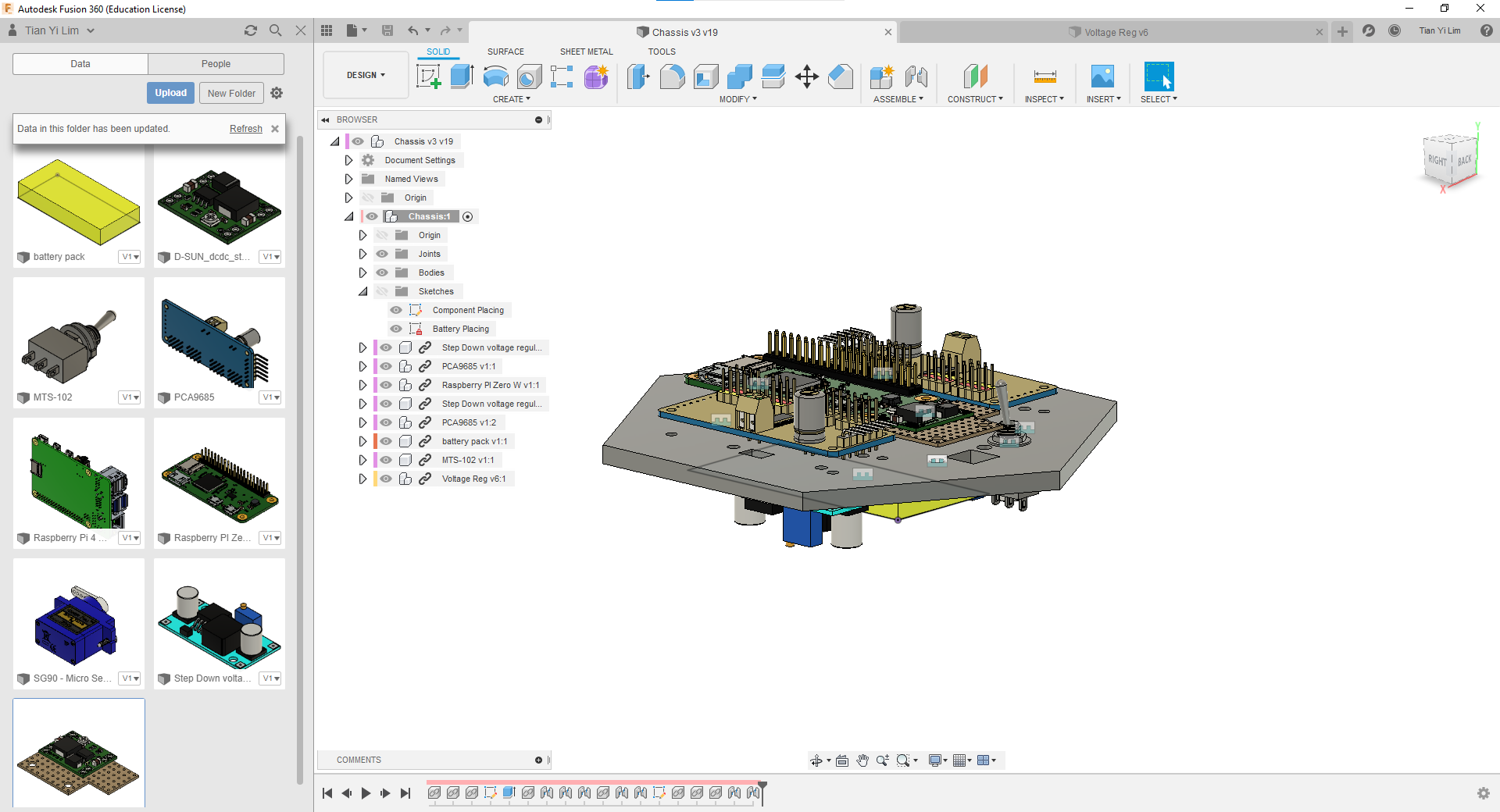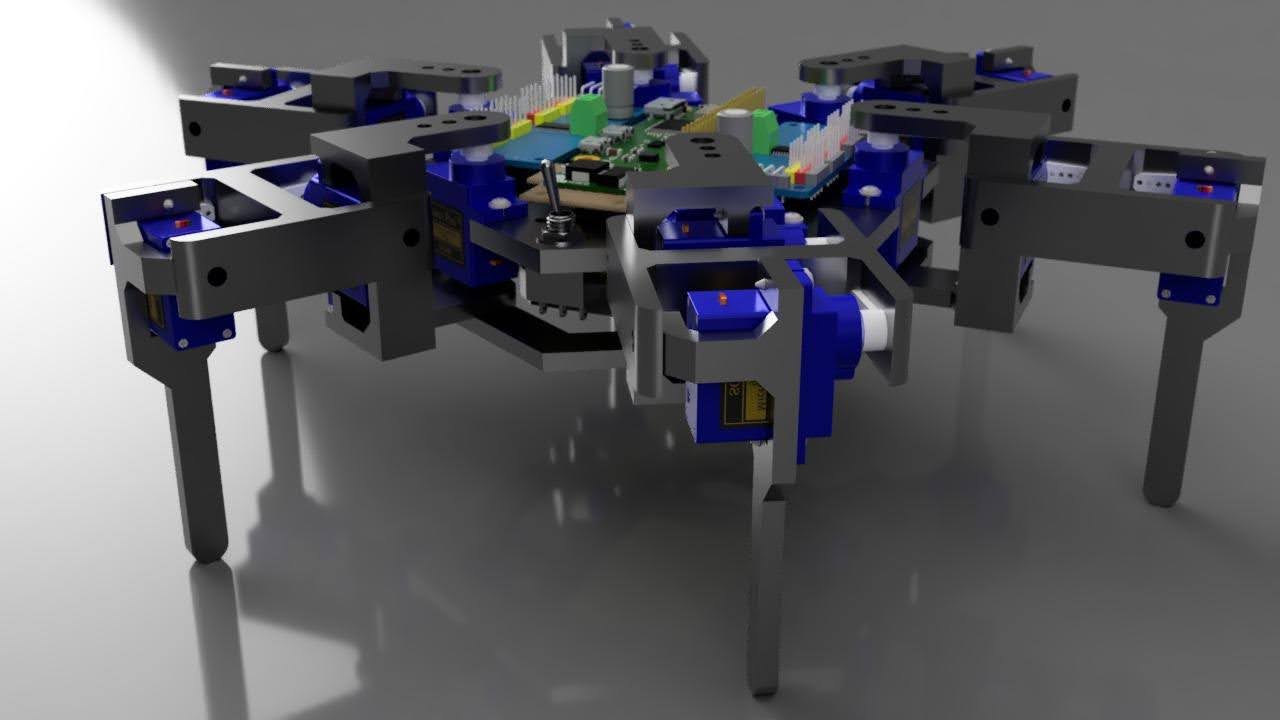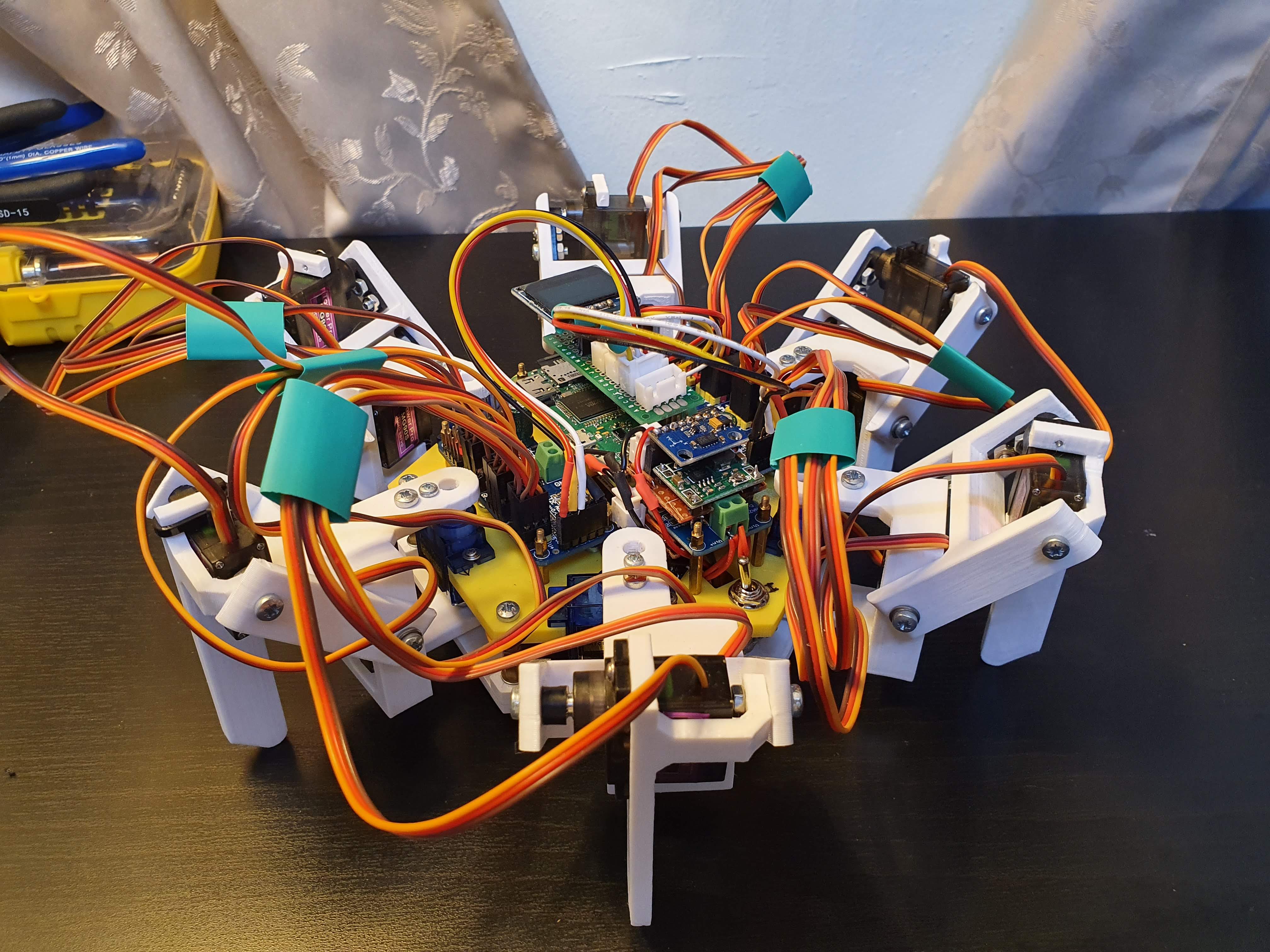Hexapod Robot 2020
Over my Summer break in 2020, I built a 18-DOF hexapod robot. It had always been a dream for me to build something like this, and I’m glad that (perhaps because of COVID?) I finally had the time to do just that.
I mostly tried to follow Oscar Liang’s wonderful pointers on Inverse Kinematics, adapting it to my use case. I found the trigonometry quite engaging to do, but stopped short of implementing rotational/translational matrices.
I mainly used a Raspberry Pi Zero, two PCA9685 I2C servo controllers, and a mix of SG90/MG90 hobby servos for the hardware. The chassis was modelled in Fusion 360.

Desiging the robot in Fusion 360.
There were multiple components in the model and it taught me a lot about proper parametric design.
The robot was then programmed in Python. I had just picked up how to use Matplotlib, Jupyter, and Numpy, so I decided to develop and test my walking algorithms using these technologies.

A render of the robot. Eventually I would use MG90 metal gear servos for the inner leg joints.
On the firmware front, I interfaced with the PCA9685 servo controllers with Adafruit’s software library. As I had opted to use a 2-cell LiPo battery as my power source, I opted to include an INA219 I2C current/voltage sensor to act as a rudimentary battery management system. A SSD1306 OLED screen was used so I could read out the current battery voltage (and other parameters). Again, Adafruit’s Python libraries proved invaluable.

The final robot, in the flesh!
I managed to complete the robot in time for a showacase the Imperial College Robotics Society was running at the time, and my video below impressed the juding commitee enough for me to win £40 from them :)
As I do more projects, my desire to stay closer to the algorithms and software increases. Perhaps I’m getting too old to solder…